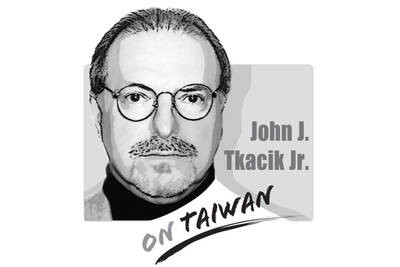After signaling that it was moving to a more nuanced COVID-19 policy, Shanghai — a city of 26 million — was pressured by the central government to lock down in late March, and has only just started to ease restrictions after one month. The official reason for this drastic policy shift is that citywide testing had revealed high infection rates. Yet one is left wondering why the authorities did not opt for a less costly alternative to a complete lockdown.
After all, the Omicron variant of SARS-CoV-2, which now accounts for almost all new cases globally, has only mild effects on vaccinated people. While China’s elderly population does have a surprisingly low vaccination rate (about 60 percent), immunizing this cohort is well within the country’s messaging and mobilization capabilities.
Moreover, complete lockdowns have high economic costs. Economists estimate that Shanghai’s closure could reduce overall Chinese GDP by 4 percent this year. Chinese authorities have introduced additional economic uncertainty by shifting suddenly from a four-day lockdown to an indefinite one. Shanghai officials did not have time to set up the infrastructure needed to sustain a prolonged lockdown, and residents were unable to stock up on enough food before being confined to their homes. That the city has recorded only 17 deaths (as of April 20) has added to the public’s anger and frustration.

Illustration: Yusha
Two facts are crucial to understanding the rationale for the lockdown. First, while the Chinese government aims to be a global leader in vaccine production, Chinese vaccines are widely considered to be less effective than those being produced and administered elsewhere. If an easing of the lockdown were to result in higher mortality rates among vaccinated Chinese (compared with vaccinated populations elsewhere), China would be deeply and publicly embarrassed.
Second, there is an ongoing competition within the Chinese leadership between those who believe in strong centralized authority and those who prefer more decentralized governance. After the disastrous one-size-fits-all policies of the Great Leap Forward in the 1950s, the post-1978 reform government devolved decisionmaking to regional governments, which were given much more autonomy over economic policy and were encouraged to compete with one another. Fiscal federalism was very effective at promoting growth, but it also gave regional governments a taste for independence.
To counter this tendency, the central government has invested a large share of its growing revenues since the early 2000s in centralizing mechanisms, such as by expanding the bureaucracy and strengthening tax enforcement.
However, because regional governments’ interests are not always aligned with those of the national government, recentralization has been unpopular in many provinces. A recent example is the trade dispute with the US, which generated nationalist support, but damaged the economies of coastal manufacturing cities like Shanghai.
The central government’s argument for recentralization is that it allows Chinese authorities to mobilize resources and make investments that are good for the country, but that local governments would never pursue on their own. One example is China’s rapid infrastructure development. A highway connecting two cities can provide large benefits overall, but if a town along the route objects to its construction and has a say in the matter, the project might not proceed. China’s strong centralized decisionmaking avoids such problems.
The most highly publicized example of beneficial centralized power is China’s response to COVID-19 during the first phase of the pandemic. Through rapid lockdowns, mandatory quarantines and mass testing, it achieved some of the lowest infection and death rates in the world — a remarkable feat for a middle-income country with one of the world’s highest population densities.
However, Shanghai refused to impose a mass lockdown. In addition to being the largest urban economy in China and the glittering jewel of the post-1978 reforms, the city has a history of free thinking. Reflecting the post-Opium War melting pot of European colonists and adventurers, White Russian and Jewish refugees, Chinese triads, and other groups, it has long been the place where East meets West. Modern political leaders — from Chinese Communist Party founders to Chinese Nationalist Party (KMT) figures such as Sun Yat-sen (孫中山) and Chiang Kai-shek (蔣介石) — as well as some of the greatest 20th-century Chinese writers Lu Xun (魯迅), Qian Zhongshu (錢鍾書) and Eileen Chang (張愛玲) have had deep ties to the city.
Today, Shanghai’s residents are among the most educated, well-traveled, and wealthiest in China. During the 1990s and early 2000s, the city often experienced rates of per capita income growth as high as 28 percent per year, generating massive revenues for the central government in Beijing — and making it accustomed to having a greater say over its affairs than most other cities. When it comes to economic and administrative management, Shanghai’s residents often feel superior even to Beijing.
Merited or not, these beliefs, combined with the importance of the Shanghai economy, mean that the central government must manage the city delicately. That is why Shanghai previously was permitted to deviate from the national lockdown policy. It pursued a more flexible approach, locking down individual blocks instead of the entire city. When rising Omicron cases became inevitable, it distributed (voluntary) at-home antigen tests, a measure that one is more likely to see in Western countries than in other parts of China.
That Beijing ultimately overruled the Shanghai leadership can be viewed as a sign that the centralizers are asserting their power over the proponents of decentralized decisionmaking.
However, who will shoulder the blame for the wide-ranging economic and social costs that resulted from the lockdown? Will it fall on Shanghai for letting infection rates rise, or on those who forced the city into the sudden lockdown? The answer will be an indication of the future of China’s recentralization efforts.
Nancy Qian, professor of managerial economics and Decision Sciences at Northwestern University’s Kellogg School of Management, is founding director of China Econ Lab and Northwestern’s China Lab and leads the Kellogg development economics initiative.
Copyright: Project Syndicate

On May 7, 1971, Henry Kissinger planned his first, ultra-secret mission to China and pondered whether it would be better to meet his Chinese interlocutors “in Pakistan where the Pakistanis would tape the meeting — or in China where the Chinese would do the taping.” After a flicker of thought, he decided to have the Chinese do all the tape recording, translating and transcribing. Fortuitously, historians have several thousand pages of verbatim texts of Dr. Kissinger’s negotiations with his Chinese counterparts. Paradoxically, behind the scenes, Chinese stenographers prepared verbatim English language typescripts faster than they could translate and type them
More than 30 years ago when I immigrated to the US, applied for citizenship and took the 100-question civics test, the one part of the naturalization process that left the deepest impression on me was one question on the N-400 form, which asked: “Have you ever been a member of, involved in or in any way associated with any communist or totalitarian party anywhere in the world?” Answering “yes” could lead to the rejection of your application. Some people might try their luck and lie, but if exposed, the consequences could be much worse — a person could be fined,
On May 13, the Legislative Yuan passed an amendment to Article 6 of the Nuclear Reactor Facilities Regulation Act (核子反應器設施管制法) that would extend the life of nuclear reactors from 40 to 60 years, thereby providing a legal basis for the extension or reactivation of nuclear power plants. On May 20, Chinese Nationalist Party (KMT) and Taiwan People’s Party (TPP) legislators used their numerical advantage to pass the TPP caucus’ proposal for a public referendum that would determine whether the Ma-anshan Nuclear Power Plant should resume operations, provided it is deemed safe by the authorities. The Central Election Commission (CEC) has
Xiaomi Corp founder Lei Jun (雷軍) on May 22 made a high-profile announcement, giving online viewers a sneak peek at the company’s first 3-nanometer mobile processor — the Xring O1 chip — and saying it is a breakthrough in China’s chip design history. Although Xiaomi might be capable of designing chips, it lacks the ability to manufacture them. No matter how beautifully planned the blueprints are, if they cannot be mass-produced, they are nothing more than drawings on paper. The truth is that China’s chipmaking efforts are still heavily reliant on the free world — particularly on Taiwan Semiconductor Manufacturing